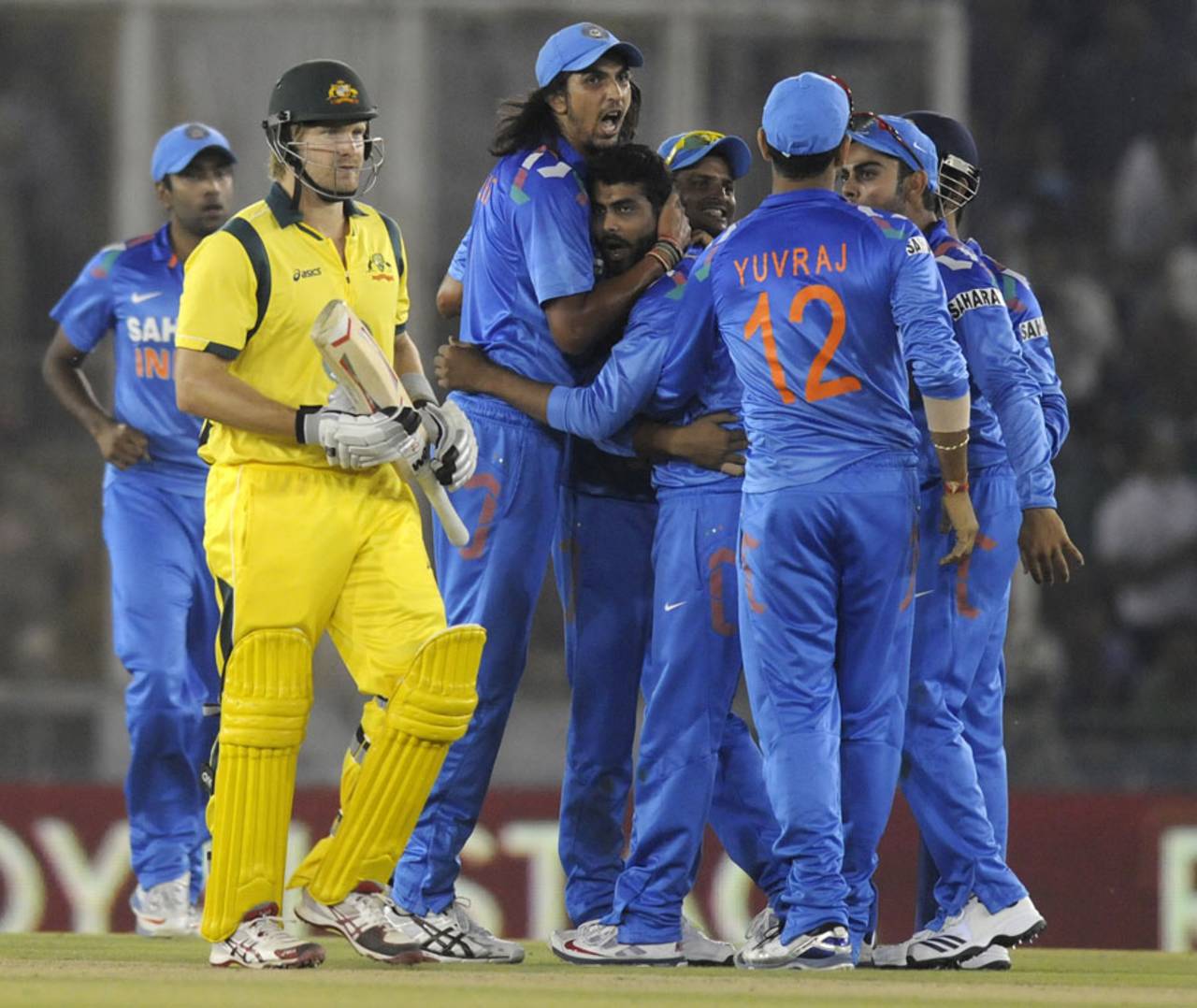Eight ways to empower bowlers in ODIs
If we don't want limited-overs cricket to turn into one-sided massacres, we need to change some rules and encourage attacking fields
V Ramnarayan
23-Oct-2013

Ishant may be wayward, but the rules are heavily stacked against him • BCCI
The run feasts of the India-Australia one-day series have provoked much thought among followers of the game. From the serious analyst to the crazy fan, everyone has an opinion. Most want heads to roll. Indian heads, of course.
At least three newspapers headlined the dilemma of Ishant Sharma on the same day - as part of curtain raisers, not match reports. And sure enough, the fast bowler fulfilled their dire predictions of yet another wayward spell in the match that followed. Nobody, however, paid any attention to the mauling some of the Australian bowlers received.
Short boundaries, better and heavier bats, the two-new-balls rule, and crumbling bowler morale have all contributed to the annihilation of attacks on both sides, reducing the bowlers to cartoon characters subjected to ridicule and worse - by media and spectators alike, who bay for their blood.
On any given day, 300 is par for the course, no longer an imposing total. Mishits go for six. A fast bowler can be traumatised in novel ways: by the batsman walking towards him contemptuously even as he gets ready to deliver; by being swept; by being undercut over deep third man. Slow bowlers can be reverse-swept, switch hit, dilscooped, and what not. The free hit for six can make you wish the ground would open up and swallow you; your team is already in desperate straits, and you have committed the crime of bowling a no-ball.
How do we restore the balance so things are not so lopsided against the bowler? Allow one wide per over, one no-ball per over, or best of all, one beamer per over? Legalise chucking (it already is half-way there, isn't it?), even underarm bowling? Permit dismissals through one-bounce catches?
Actually, the problem is no laughing matter. The humiliation of the bowler is so complete today that the SPCA should consider stepping in; better still, let's form an SPCB to offer succour to the poor benighted souls.
But something dramatic has to be done to prevent ODI cricket from degenerating into a massacre of innocents. What are the options open to the lawmakers, provided they are at all interested in reversing the trajectory of the game back from a mockery of its original values?
1. Let's take the two-new-balls rule. Its opponents complain that it hampers spin and reverse swing. So why don't we allow the fielding captain to use an old ball from one end? This way, the batsman would be really challenged, having to face a new ball from one end and an old one from the other. A choice of old balls of different ages and varying gloss, including those with one rough half and one shiny one, to favour reversing, could be provided to the bowlers to pick from at the start of the innings. Or scrap the two-new-balls rule altogether and give the fielding captain the choice of operating with new or used balls.
2. Bring back the substitution idea briefly tried out some years ago, and make it possible for the fielding side to bring in a fresh bowler at a strategic moment.
3. Reward wicket-taking bowlers by offering the option of keeping them on beyond their ten overs, adding one over to his quota for each wicket taken by a bowler. This way, captains won't be forced to take off a strike bowler and lose their hard-earned initiative.
4. Encourage attacking fields. This can be effected by removing all other field restrictions when the fielding captain has three close-in fielders, say, three slips, two slips and a gully, or two slips and forward short leg.This way, a new-ball bowler can have three fielders in close catching positions, bolstered by the protection of fielders on the boundary line. An orthodox Test match field, in short.
5. Exempt the bowler from being called for wides for height if the batsman has started walking towards him.
6. Exclude balls pitched on the stumps from the wide rule, provided they pass leg stump inside a line drawn very close to it.
7. Liberate the fielder on the fence by allowing him to touch the rope with any part of his body while preventing a boundary. All he has to ensure is that the ball is within the boundary at all times.
8. Declare the batsman out if a catch is held beyond the boundary, provided, of course, the fielder is inside the boundary when the ball is bowled. The distance between the boundary rope and the advertisement banner must not exceed a specified limit.
I know some of these suggestions could be seen as outrageous, even hare-brained, but unless we do some serious lateral thinking on empowering the bowler, one-day cricket will soon lose the label of a contest.
V Ramnarayan is an author, translator and teacher. He bowled offspin for Hyderabad and South Zone in the 1970s